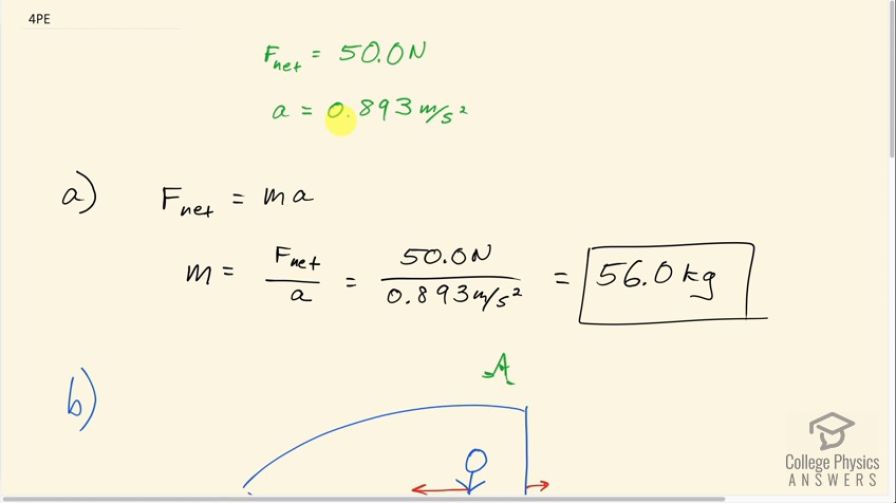Question
Since astronauts in orbit are apparently weightless, a clever method of measuring their masses is needed to monitor their mass gains or losses to adjust diets. One way to do this is to exert a known force on an astronaut and measure the acceleration produced. Suppose a net external force of 50.0 N is exerted and the astronaut’s acceleration is measured to be . (a) Calculate her mass. (b) By exerting a force on the astronaut, the vehicle in which they orbit experiences an equal and opposite force. Discuss how this would affect the measurement of the astronaut’s acceleration. Propose a method in which recoil of the vehicle is avoided.
Final Answer
- The acceleration of the astronaut with respect to the spacecraft is what's being measured. This will be greater than the acceleration of the astronaut with respect to an observer who is stationary. Stationary in this context means stationary with respect to the centre of mass of the astronaut-spacecraft system. In other words, the stationary observer is moving at constant speed in the same orbit as the spacecraft before it accelerated due to the force on the astronaut.
A method in which the vehicle recoil is avoided is to have a heavy object floating in the vehicle which applies the known force. The object will recoil, but not the vehicle.
Solution video
OpenStax College Physics, Chapter 4, Problem 4 (Problems & Exercises)

vote with a rating of
votes with an average rating of
.
Calculator Screenshots
Video Transcript
This is College Physics Answers with Shaun Dychko. A 50-Newton net force is going to be applied to an astronaut, and their acceleration will be measured, and it turned out to be 0.893 meters per second squared. From this information, we can figure out what the mass of the astronaut is and figure out whether they should be eating more or less. We know that net force is mass times acceleration, and then we can divide both sides by a to solve for m. So the mass of the astronaut then is 15 newtons divided by the acceleration 0.893 meters per second squared, which is 56.0 kilograms. But that's not the whole story. Because if this force is applied by a thing that's attached to the spacecraft, then the spacecraft is also going to experience the same force on it. These are newtons third law pairs. This is the force on the spacecraft. This is the force on the astronaut. The o represents with respect to the orbit that both the astronaut and spacecraft are traveling in. This is an acceleration of the spacecraft with respect to the orbit this way, and this is the acceleration of the astronaut with respect to the orbit going this way. This represents some stationary observer, stationary with respect to the everything initially, and this observer is going with the orbit. The acceleration of the astronaut with respect to the ship, this is what's measured, is going to be the acceleration of the astronaut respect to the orbit plus the acceleration of the orbit with respect to the spacecraft. We have the acceleration subscripts set up so that the inner ones are the same, which means they cancel, but we don't know what the acceleration of the orbit with respect to the spacecraft. We're only given acceleration of the spacecraft with respect to the orbit. We take the negative of that in order to switch the subscripts around. This acceleration of the astronaut with respect to the ship is actually a combination of the astronaut's acceleration with respect to the orbit plus the acceleration of the orbit with respect to the spacecraft. This measurement isn't measuring just the acceleration of the astronaut because the measuring device is attached to the spacecraft or the spacecraft itself is accelerating. That affects what's being measured. What's going to be measured is going to be greater than just the acceleration of the astronaut. A better system would be to avoid vehicle recoil by having some heavy object floating inside the vehicle which applies this some known force. That object with recoil as it has to but that won't affect the device that's measuring the acceleration that's attached to the vehicle because now the vehicle will not be accelerating.
